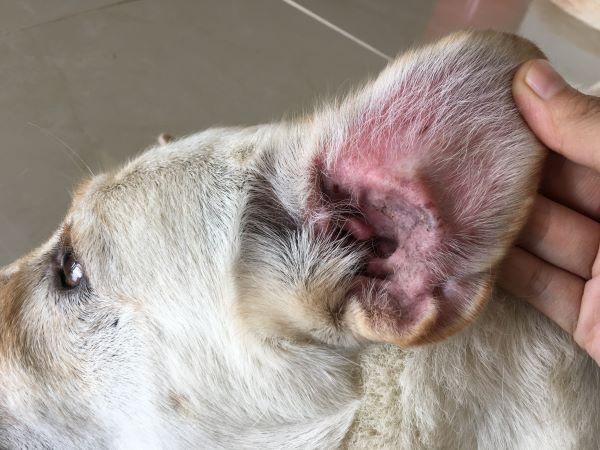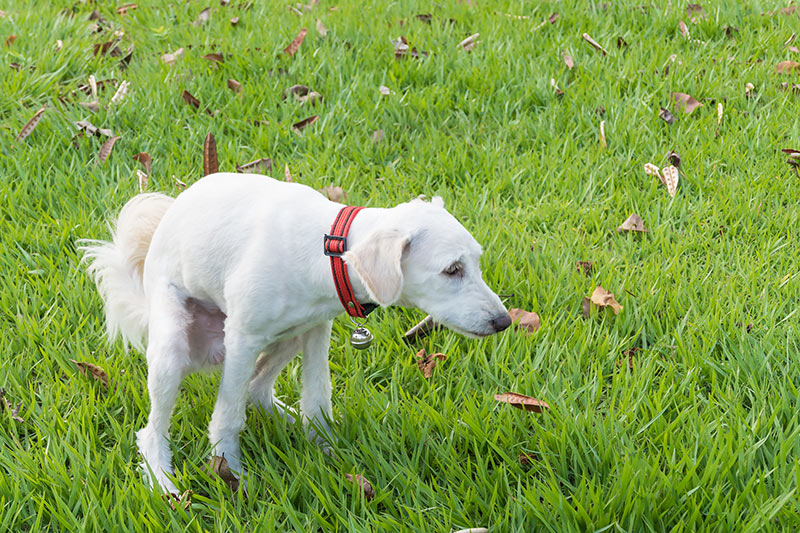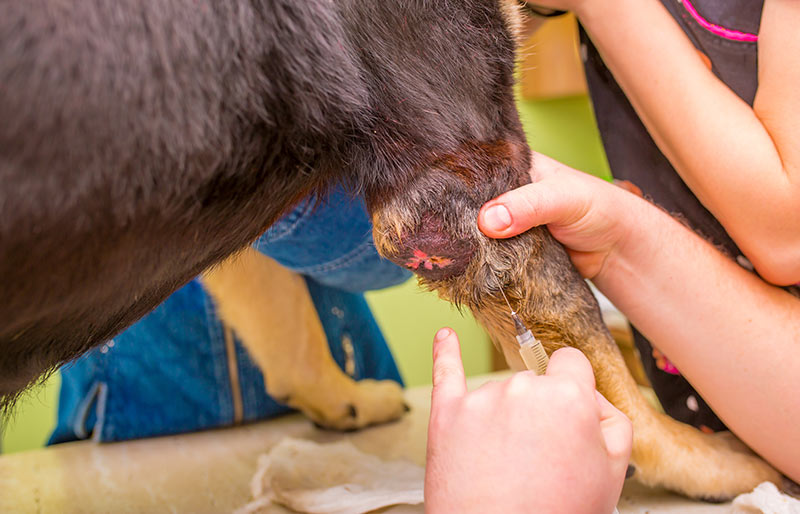Ten common health problems for dogs
Unfortunately, health related problems in our pets are a part of life, affecting the young, the elderly, and every age in-between. While most pooch owners try their best to keep their pets healthy and happy, certain conditions can occur that are simply beyond their control. Although it’s something we’d all rather avoid thinking about, it’s important to educate ourselves about which conditions, illnesses or diseases are most likely to affect our pets.

There are many illnesses and conditions that can affect dogs and it’s surprising to learn just how common some of these can be. The fact is, after pet food, veterinary services account for the second largest category of on-going expenditure by pet owners, according to the 2022 Pet Survey Report.
In this survey of 924 Australian dog owners, 84% reported that they had taken their dog to the vet in the prior 12 months, and most of them visited the vet multiple times, averaging 2.1 annual visits per dog. After general check-ups and vaccinations, the next most common reasons for vet visits were eye, ear or skin conditions.
 We’ve put together a list of some of the most common health problems that we hear about every day at Bow Wow Meow—some are not so serious while others will need more specialised care. In all cases, please don’t rely on Dr Google for a diagnosis or treatment plan!
We’ve put together a list of some of the most common health problems that we hear about every day at Bow Wow Meow—some are not so serious while others will need more specialised care. In all cases, please don’t rely on Dr Google for a diagnosis or treatment plan!
To ensure the most favourable outcome for your precious pooch, it’s always best to consult your vet as soon as possible. Your vet will provide a plan for management and treatment that is optimised for your dog, taking into account individual factors such as its breed, size, age and general health.
1. Cataracts

Cataracts are a serious health issue, especially for older dogs, as it can really affect the way they see. A cataract is an opacity or cloudiness of the lens that prevents light from reaching the retina, leading to vision impairment. Cataracts can develop in one or both eyes and they may progress slowly or rapidly, leading to vision impairment and even blindness.
Signs of a cataract include a whitish, blue or grey area in the centre of the eye as well as behavioural changes relating to decreased vision. Because dogs can use their keen senses of hearing and smell to compensate for loss of vision, it can be difficult for a pet owner to detect cataracts at an early stage.
It’s not only old age that will bring about these growths on the eye. Cataracts may develop after the eye has been through a trauma or can be caused by disease. Cataracts in dogs may even be present when the dog is born, or may develop in the first few weeks of a puppy’s life.
Learn more about cataracts in dogs here.
2. Arthritis

Arthritis, a general term for abnormal changes in a joint, is very a common condition in older dogs. In fact, one in five Australian dogs suffer from arthritis at some point during their lives. It is a major cause of chronic pain in older dogs and can result in permanent joint damage. The most commonly affected joints in dogs are the hips, knees, shoulders and elbows.
You’ll notice that your dog is slower to get onto their feet (especially in the morning or in cooler weather) and will be far less active than they used to be. It’s often very hard to tell if your dog is suffering from arthritis. Even though it’s very painful, your dog may be able to hide its pain and discomfort, especially in the early stages.
Exercise, weight control and anti-arthritic drugs can all lead to helping your dog overcome the pain of arthritis.
Learn more about arthritis in dogs here.
3. Ear Infections

Ear infections are very common in dogs, especially in long-eared breeds and those that spend a lot of time outside.
Often, dirt, dust or some other alien object like a grass seed can become lodged inside your dog’s ear, causing it to become irritated and, eventually, infected. You’ll know if your dog has an ear infection if they’re frequently pawing at their ears and shaking their heads. Infected ears may be red or crusty and may produce a discharge or odour.
Ear drops with antibiotics will usually be prescribed by your vet in order to fight off the infection. Another good habit to get into is cleaning your dogs’ ears regularly (learn how to do this properly here).
Learn more about ear infections in dogs here.
Unsure how serious it is?
Bow Wow Meow policyholders can get access to trusted vet care anytime, anywhere, at no additional cost. Connect to an experienced Australian registered vet via video call, 24/7. Whether it’s providing vet advice, setting up at-home treatment plans, or confirming if you need to visit a vet in person, you can get help when you need it.
Find out more about our pet insurance cover options.
4. Kennel Cough

Kennel cough is very common amongst dogs that have been in crowded conditions such as at the animal shelter, vet or in pet accommodation. Unfortunately, it’s a highly contagious illness that spreads easily between animals via droplets in the air or contact with a contaminated surface (water, food bowl or contact with another dog). Fortunately, although kennel cough can sound bad, it’s equivalent to the common cold for us and is not usually serious or life-threatening.
The best way to look after your pet with kennel cough is to give them rest and plenty of good food and water. You may be given antibiotics by your vet to knock it over if your dog’s case is particularly severe. Check out our dog vaccination guide for information on preventing Kennel Cough.
Learn more about kennel cough in dogs here.
5. Diarrhoea

Diarrhoea – frequent liquid or loose bowel movements – is very common in dogs, largely because it can be brought about by a number of causes, some of them serious, and others no more than a change in diet or a sensitive stomach. In more severe cases, dehydration may develop and this could lead to more serious health concerns, including weakness, exercise intolerance and even collapse and seizures.
In most cases, diarrhoea will subside with time, a good diet and plenty of rest. However, chronic diarrhoea may be a symptom of an underlying illness such as inflammatory bowel disease, kidney or liver disease, infections or even cancer. If the condition persists for a week or more, it’s time to visit your vet for a check up.
Learn more about doggy diarrhoea here.
6. Fleas and ticks

Fleas are a common parasite that nearly every dog will get during a lifetime. Fleas jump from one host to the other, and your dog will usually pick them up by coming into close contact with an infested animal. Dogs with fleas can suffer from severe itching all over their body, even if they’ve only got one flea. Scratching, pawing and licking of the bites to try to relieve the itching can lead to inflammation, infection and even hair loss.
Fortunately, fleas can be eradicated quite easily with the right medication and you can find a number of products for sale at your local pet store to protect your dog from future infestations.
 Ticks, however, are far more serious. The paralysis tick, which is common on the east coast of Australia between the months of August and February, can cause serious health problems for your dog, including poisoning of the blood and even death. Dogs are much more likely to pick up a paralysistick if they are outdoor animals, interact with wildlife or have access to bushy or grassy areas – these sneaky parasites wait in the vegetation until your pet passes through it.
Ticks, however, are far more serious. The paralysis tick, which is common on the east coast of Australia between the months of August and February, can cause serious health problems for your dog, including poisoning of the blood and even death. Dogs are much more likely to pick up a paralysistick if they are outdoor animals, interact with wildlife or have access to bushy or grassy areas – these sneaky parasites wait in the vegetation until your pet passes through it.
Tick control is essential to protect your pet from paralysis ticks.


















